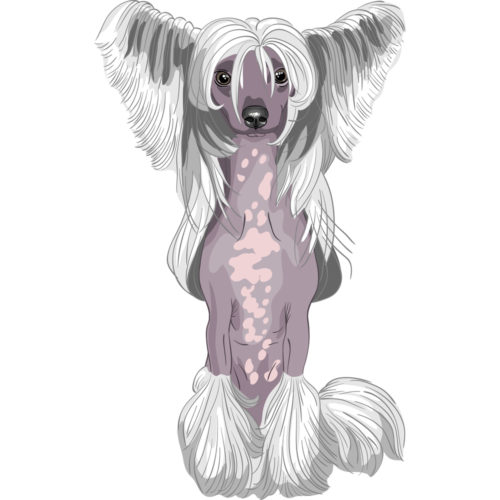
It was probably one of the earliest written descriptions of the breed: “…curiously spotted, and for the most part naked, his head only adored with an English Peruque and his tail with a single tuft at the end.”
English naturalist, Robert Plot, wrote the words in 1686 in his book, “The Natural History of Staffordshire.” The dog he described was also illustrated, and it is virtually identical to the modern Chinese Crested Hairless.
But what is a Peruque?
Tufts of hair on the feet of Cresteds are called “socks,” and the end of the tail is called the “plume.” Today, the hair on the head is referred to as the crest, but the way Plot used the word “peruque” hints that in the 17th century, it referred to hair on the head. These days, a peruque is a wig or hair extensions (can’t you just picture a Chinese Crested Hairless in hair extensions?).
It should be noted that the crest on a Hairless is soft, straight, and single coated, and it can be be anything from a strip of hair from the dog’s stop to a full head of hair, complete with face furnishings and ear fringes. Hair can be left on the face and ears of the Hairless, but it can also be trimmed or shaved. That said, a Hairless with a heavy crest and equally heavy furnishings is more likely to have body hair that might be a strip down the dog’s back, or maybe on the dog’s hips or shoulders. However, this does not make the dog a Powderpuff.
Image: Chinese Crested Hairless/Deposit Photo
